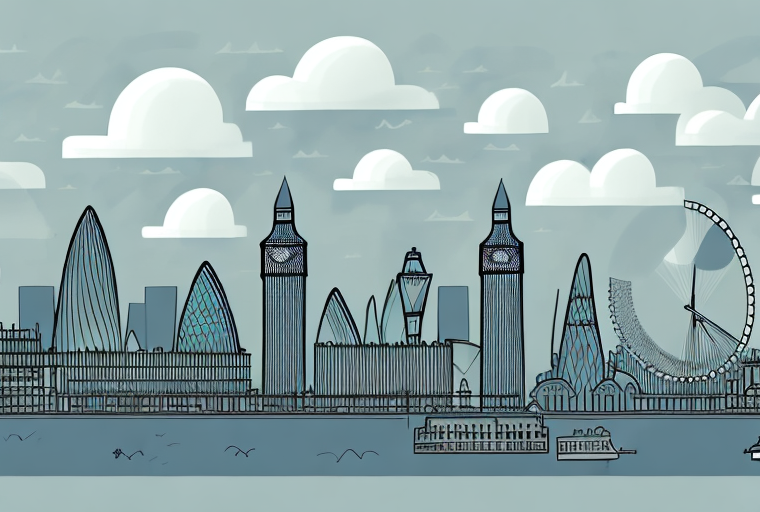In recent years, Uber has become a household name in the world of transportation. The ride-hailing giant has revolutionized the industry, offering an alternative to traditional taxis and public transportation. However, Uber’s journey in London has been far from smooth. The company has faced numerous challenges and obstacles, from regulatory hurdles to protests by traditional taxi drivers. In this article, we take a closer look at how Uber has transformed in London, from a ban to a collaboration with the city’s authorities.
Uber’s Transformation in London: From Ban to Collaboration
London, one of the world’s most vibrant and bustling cities, has always been a fiercely competitive market for transportation services. When Uber first launched its services in London in 2012, it faced strong resistance from the traditional taxi industry. Taxi drivers argued that Uber was undercutting their prices and flouting regulations. As a result, Uber faced legal challenges and was banned from operating in the city in 2017.
Despite this setback, Uber was determined to find a way back into the London market. The company recognized the need to address concerns raised by regulators and the taxi industry. Uber modified its operations, working on improving safety measures and driver accountability. It introduced features such as real-time driver identification and customer feedback systems.
The efforts didn’t go unnoticed. The ban on Uber was lifted in 2018, but with certain conditions. The company was granted a 15-month probationary license to operate in London, allowing it to prove its commitment to compliance and safety.
During this probationary period, Uber had to work closely with Transport for London (TfL), the city’s transportation authority. The collaboration focused on addressing concerns related to driver screening, insurance, and reporting criminal offenses. Uber also committed to sharing data with TfL to help improve transportation planning in the city.
Creating a Level Playing Field
One of the crucial points of contention between Uber and the traditional taxi industry was the issue of price undercutting. Traditional taxi drivers argued that Uber’s lower fares gave them an unfair advantage. To address this concern, Uber introduced the “UberTaxi” service in London. This service allows users to hail traditional black cabs through the Uber app, ensuring that licensed taxi drivers can also benefit from the platform’s wider customer base.
Furthermore, Uber agreed to pay a fee to TfL for every trip taken in London. This fee is used to fund initiatives aimed at improving the city’s transportation infrastructure and reducing congestion. These measures were seen as steps towards creating a level playing field in the transportation market.
As part of its commitment to safety, Uber implemented additional measures to protect both passengers and drivers. The company partnered with local law enforcement agencies to conduct background checks on drivers and ensure that they meet the necessary requirements. Uber also invested in technology to enhance driver identification, making it easier for passengers to verify the identity of their drivers before getting into the vehicle.
Moreover, Uber launched a comprehensive driver training program to ensure that all drivers are equipped with the necessary skills and knowledge to provide a safe and reliable service. The program covers topics such as defensive driving, customer service, and handling difficult situations. By investing in driver training, Uber aimed to improve the overall quality of its service and build trust with both passengers and regulators.
Another area of focus for Uber was improving accessibility for passengers with disabilities. The company worked closely with disability advocacy groups to understand their specific needs and develop solutions to address them. As a result, Uber introduced features such as wheelchair-accessible vehicles and options for passengers to request assistance with getting in and out of the vehicle.
Furthermore, Uber collaborated with local organizations to provide job opportunities for individuals who face barriers to employment. Through initiatives such as UberACCESS, the company aimed to create a more inclusive and diverse workforce. By partnering with organizations that specialize in supporting marginalized communities, Uber sought to make a positive social impact in addition to its transportation services.
In conclusion, Uber’s journey in London has been one of transformation and collaboration. The company recognized the importance of addressing concerns raised by regulators and the traditional taxi industry, and took proactive steps to improve safety, compliance, and accessibility. Through collaboration with Transport for London and other stakeholders, Uber worked towards creating a level playing field in the transportation market, while also investing in initiatives to enhance the overall transportation infrastructure of the city.
A Positive Impact on London’s Transportation Landscape
The transformation of Uber in London has had a significant impact on the city’s transportation landscape. With over 45,000 licensed drivers in the city, Uber has become an integral part of London’s transportation ecosystem. It offers an affordable and convenient option for both residents and tourists.
The rise of Uber has not only revolutionized the way people move around London, but it has also brought about a multitude of positive changes to the city’s transportation infrastructure. As more and more drivers join the Uber network, the availability of rides has increased exponentially, reducing the reliance on traditional taxi services and public transportation. This has resulted in shorter wait times for passengers and a more efficient use of the city’s road network.
Furthermore, the collaboration between Uber and Transport for London (TfL) has proven to be mutually beneficial. Through the sharing of data, Uber has provided valuable insights to TfL, enabling them to make informed decisions about transportation planning. This data-driven approach has allowed TfL to identify areas with high demand and allocate resources accordingly, ensuring that transportation services are provided where they are most needed.
In addition to data sharing, Uber’s commitment to safety measures has played a crucial role in its success in London. The company has implemented various safety features in its app, such as real-time GPS tracking, driver background checks, and an in-app emergency button. These measures have not only reassured passengers, but they have also garnered the support of regulators and authorities, who recognize the importance of ensuring the safety of passengers using ride-hailing services.
Uber’s success in London has not gone unnoticed by other cities around the world. Many have taken note of the positive impact Uber has had on London’s transportation landscape and have followed suit in implementing stricter regulations and demanding higher safety standards from Uber and its competitors. This global ripple effect has led to a more standardized and regulated ride-hailing industry, ensuring that passengers can enjoy the benefits of these services while maintaining their safety and well-being.
In conclusion, Uber’s presence in London has brought about a positive transformation in the city’s transportation landscape. Through its affordable and convenient services, collaboration with TfL, and commitment to safety, Uber has not only improved the way people travel within the city but has also influenced transportation policies and regulations worldwide. As Uber continues to evolve and adapt to the changing needs of urban transportation, its impact on London and beyond is likely to remain significant.
The Road Ahead
While Uber has come a long way in London, challenges still lie ahead. The traditional taxi industry continues to voice concerns about unfair competition, and there are ongoing discussions about further regulatory changes. However, the collaboration between Uber and TfL has set a precedent for cooperation between technology companies and regulators.
Amidst these challenges, Uber has been making significant strides in addressing the concerns raised by the traditional taxi industry. The company has implemented various measures to ensure fair competition, such as introducing a minimum fare for Uber rides and implementing a rating system for drivers. These initiatives aim to create a level playing field and foster healthy competition within the transportation industry.
Furthermore, Uber’s collaboration with TfL has not only benefited the company but also the city of London as a whole. The partnership has led to improved transportation options for Londoners, with Uber providing a reliable and convenient alternative to traditional taxis. This has resulted in reduced congestion and improved traffic flow, making the city more accessible and efficient.
As Uber continues to evolve and adapt, it is likely that further collaborations and partnerships will be forged. The company has already ventured into various other transportation services, such as UberEATS and UberPOOL, expanding its reach beyond just ride-hailing. These innovations demonstrate Uber’s commitment to providing comprehensive and integrated transportation solutions for its users.
With its vast network and cutting-edge technology, Uber has the potential to play a significant role in shaping the future of transportation in London and beyond. The company’s data-driven approach allows for efficient route planning and optimization, reducing travel times and minimizing environmental impact. Additionally, Uber’s commitment to safety and security, with features such as real-time tracking and driver background checks, ensures a reliable and secure transportation experience for its users.
Only time will tell how Uber’s transformation from a ban to a collaboration will impact the city’s transportation landscape in the long run. However, it is clear that Uber’s presence has already sparked a wave of innovation and disruption in the industry. As more cities embrace the concept of ride-hailing and technology-driven transportation, Uber’s influence is likely to extend far beyond London.
One thing is for certain, though – Uber’s journey in London is far from over. The company’s relentless pursuit of innovation and its commitment to providing accessible and efficient transportation options will continue to shape the future of urban mobility. As the landscape evolves, Uber will undoubtedly face new challenges and opportunities, but its determination to revolutionize transportation remains unwavering.





